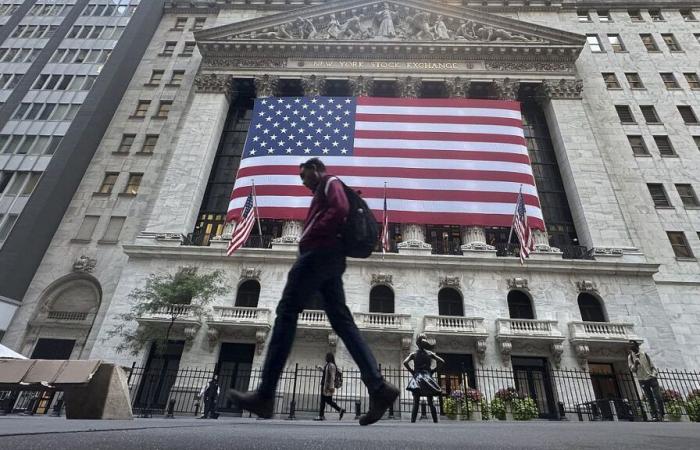On Wall Street, we await the outcome of the November 5 vote with apprehension. Here is a detailed overview of the scenarios for stock markets and government bonds.
ADVERTISEMENT
American financial circles are following the crazy presidential campaign, and the growing uncertainty is creating significant volatility on the markets.
The tense race between Trump and Harris has forced investors to turn to safe assets and hedge their risks. Sustainable market trends will be determined by the implementation of government policy after the election, with sharp reversals possible before the results are announced.
Michael Brown, senior strategist at London-based Pepperstone, said that “the biggest reward for the market, whoever wins, will be the certainty of the outcome“.
He added: “Markets are constantly hungry for the certainty that this outcome will bring and allow those who have hedged election risks to unwind their positions and get back into the fray“.
Stock markets expected to recover after sell-off
Global stock markets are expected to experience increased volatility during voting hours on November 5, potentially similar to reactions seen during the Brexit referendum and the 2016 US election.
At the time, markets crashed before Election Day, but recovered when Trump delivered his victory speech.
History doesn’t necessarily repeat itself, but recent moves have shown similarities.
The VIX Volatility Indexcompiled by the Chicago Board Options Exchange (CBOE), a standard measure for risk hedging, jumped 35% in October due to rising risk premiums.
Major global benchmarks such as the S&P 500, Euro Stoxx 600 and ASX 200 have fallen, each losing between 2% and 3% over the past two weeks due to “risk-off” sentiment. “, when market participants move from risky assets to safe havens.
Mr. Brown added that markets are pricing in a range of volatility of between 2% and 3% for these indices over the next five trading days. This could mean that equity markets could recoup their losses next week if there is no vote recount or other events prolonging uncertainty.
Long term, stocks could come under pressure under a Trump presidency if measures, such as imposing tariffs, are implemented.
For example, global markets saw a sharp sell-off during the US-China trade war in 2018, with a turnaround only after the Federal Reserve resumed rate cuts in 2019.
Since September, the Fed has already started to reduce its rates and is expected to continue to do so until December, which could encourage a bullish trend in stocks.
However, a Trump victory could increase market volatility over the next two years, while a Harris victory could provide a more stable economic outlook, allowing markets to naturally follow economic forces.
Downtrend in bonds could continue
In October, US government bonds suffered a sharp sell-off due to two main factors.
First, September employment numbers showed that the U.S. labor market was more resilient than expected. Following the Fed’s substantial interest rate cut in September, bond prices initially rose as yields fell, since yields and bond prices move inversely proportional.
However, the market has since adjusted its outlook on the Fed’s cuts, expecting a more gradual approach, which has pushed yields higher and led to bond selling.
Second, the “Trump trade” played a major role in increasing U.S. Treasury bond yields, as the billionaire’s policies are expected to lead to higher inflation, which would encourage the Fed to slow down. rate cuts. Bond yields, especially those on short-term bonds, often reflect market expectations for changes in interest rates.
A Harris presidency would not necessarily produce a reverse effect on the bond market, as his policies are also likely to increase government debt and deficits, but perhaps to a lesser extent.
The most balanced scenario for bonds could be a divided Congress, which could curb excessive government spending and ease inflationary pressures.






